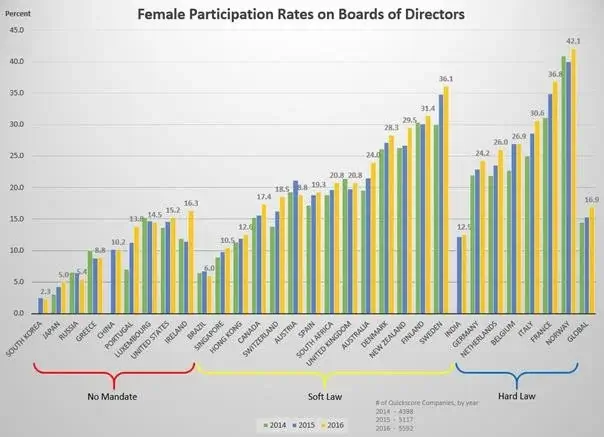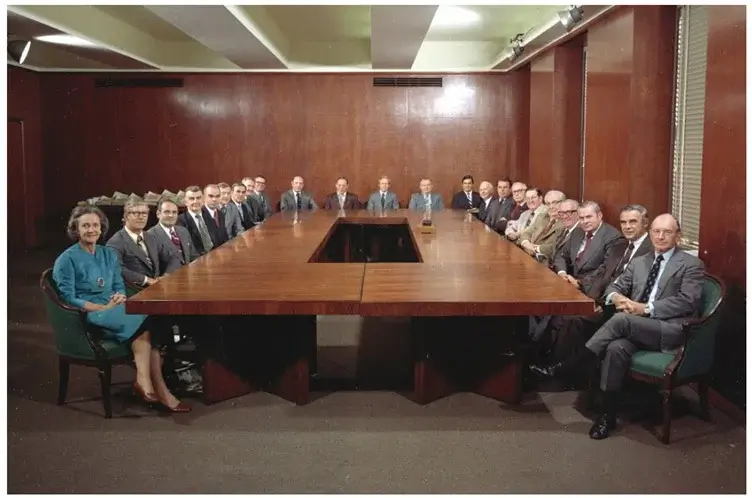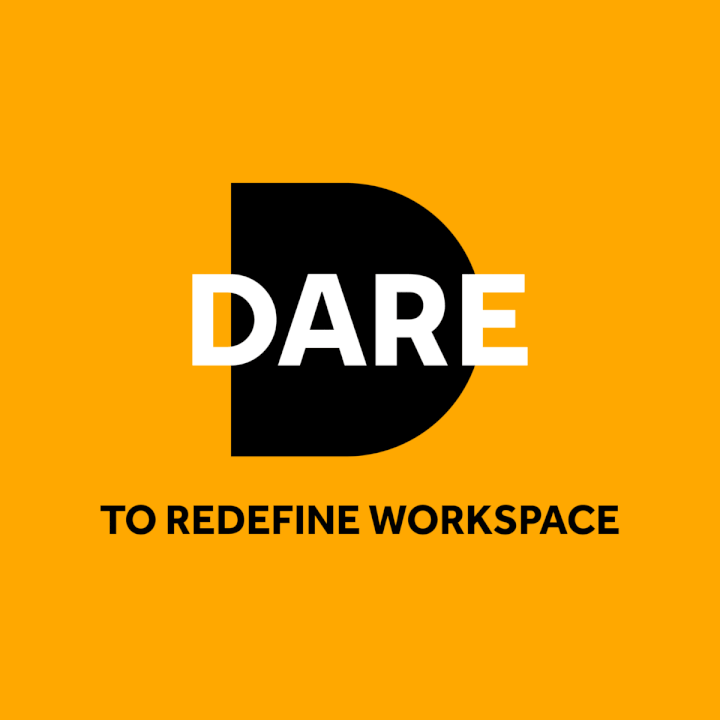‘The Great Resignation’ Is Not New
There is currently a lot of talk about “The Great Resignation,” an ongoing economic trend which started in 2021, potential causes are cited as wage stagnation, cost of living, economic & location freedom provided COVID stimulus payments and work from home policies as well as general job satisfaction.
This may all seem like a new and worrying trend, but the truth is that for women “The Great Resignation” has been ongoing for centuries. It was once expected that when a woman married, she must quit work, was that not a great resignation?
While we may think those days are over, a recent study by AIG life of 3,001 adults found that 74% of women are likely to take time out as a caregiver compared to just 26% of men.[1] Even more interesting is the fact that women make up 50% of all entry level positions, this drops to 37% of middle management positions and for C suite it is less than 19%. This does not mean that the workforce loses female employees, but it does mean that at some point in their career many women resign. Have work environments contributed to this? The traditional office environments tend to be quite masculine and geared towards accommodating men. If we look at toilet provision in most office buildings the quantity of facilities is usually based on a higher proportion of males in the population. We really need to rethink our building standards to design for diversity.
In a pre-pandemic study undertaken by the Harvard Business Review 37% of women report that they have left work voluntarily (rising to 43% for women with children)[2] So there we go “The great resignation” is nothing new, what is new is that now men are resigning, and this is giving cause for great concern, I must ask why?
When you consider the data from the AIG study, 58% of women enjoy their work compared to only 52% of men, a woman may well represent a better hire, as people who enjoy what they do tend to do it better. Several recent studies have all concluded with results that appear to support this. Companies with women in leadership and most specifically companies with women on the board of directors perform better. “Moreover, Ben Slama et al. (2019) confirmed that the uppermost level of accounting performance is achieved when the quota of 40% of women on board is fulfilled.”
A study of technology companies from Standard & Poors 500 carried out in 2021 concluded that companies should “consider a larger share of women on the board as long as their presence may positively influence firm performance. Further, increased diversity may enhance productivity, creativity, and innovation.”[3] How can we achieve a gender balance on care giving. Do we need to design workspaces with more childcare or elder care facilities?

Fig 1. Gender diversity on boards of companies covered by ISS Quality Score, by region, as of fall 2016

Fig 2. Female Participation rates on boards of directors by country. [4]
Some countries have introduced legislation to increase diversity, but this runs the risk of undermining women’s ability further with the perception that they did not achieve their position on merit? The reason that there are insufficient women in leadership is that in “The Great Female Resignation” a disproportionate number of women leave or take a break in their careers.
Our global business ecosystem is transforming, with a fundamental shift from productivity focused business to creativity focused business. At a time when we need more creativity in the workforce and specifically in leadership and management, it has been demonstrated by many studies that gender diversity can assist with innovation. We need to look at how creative women can be better accommodated in the workforce.
Invisible barriers holding back women at work
The first part of the solution is addressing perception. Research has long proven that competence or intelligence are predominantly associated with masculine characteristics. This has led to women being at a disadvantage. However, when it comes to creativity, we can change this narrative, the hindrance is with perception. In a recent paper published by the University of Toronto looking at the perception of creativity and gender it was found that “creativity is more strongly associated with stereotypically masculine characteristics and that a man’s work is more likely to be deemed creative.”[5] The research also finds that men’s ideas are more often deemed “ingenious” than women’s, even when it’s on the same topic. Supervisors assess their female employees as less creative–even when they are exhibiting more of the stereotypically masculine behaviours associated with creativity.” [6] This perception can be significantly damaging to creative women as it will undermine their confidence and leave them feeling lacking in recognition for their efforts. This is confirmed by the data from the AIG study that found that 42% of men felt that they have overachieved in their career compared to 36% of women. This lack of recognition and resulting insecurity can contribute to the reason why many women simply give up and resign.
In my early 20’s while working for a large Real Estate Company I was promoted to associate partner and to celebrate the promotion I was invited to a senior partners lunch. I was the only woman at the table and one of the attendees commented on how nice it was to see a young woman attending. It transpired through the course of the lunch that the predominant view was that many women who showed great potential early in their career, ultimately resigned. Yet nobody seemed interested in why or what could be done to address this. To the other attendees the reason was clear, women leave their careers to have children or become caregivers. I strongly felt that I would never conform to this stereotype. Today at @Contrast we believe that both women and men can have children, be caregivers and continue their careers with our full support.

Katharine Graham, first woman elected to the Associated Press’s board of directors, is seated at left during a board meeting in New York City in 1975. More than 40 years later, many boards in the world still look much like this.
These gender stereotypes are not just damaging to women, they are also damaging to men. I know many men that would love to stay home and take care of their kids but feel pressured by society to stay in the workforce and be the breadwinner. Is this why less men than women enjoy their work, and empowered by the pandemic are now starting to resign? Suddenly the world is worried.
“The Great Resignation” is largely seen as a negative economic trend I disagree, I see it as potentially a significantly positive step in breaking down these detrimental stereotypes which are based on perception rather than reality, as demonstrated by the University of Toronto study that found that women’s supervisors assessed women as far less innovative compared to their male counterparts, but that direct reports assessed their male and female managers as equally innovative. The researchers believe this finding supports prior research findings that supervisors rely more heavily on stereotypes in their performance evaluations of their employees– when no real difference exists. If we want to retain more female creative talent that can translate to more female board members, we must start tackling stereotypes and perception.
The second part of the solution is accepting diversity. Faced with the negative perception of female ability, many women try to exhibit more masculine traits, this is something I have personally witnessed, but never understood. I do not hold the view that men and women are equal or the same any more than I see any 2 people of the same gender as equal or the same, we are all unique and if we want to maximise people’s creativity, we need to accept their individuality. It is interesting that the University of Toronto study suggests this. It found that although “Women are often advised to act in more stereotypically masculine ways, it’s not clear that this behaviour will actually help them, in these contexts, agentic behaviour seems to only help men.” Creativity and performance can be enhanced by accepting diversity rather than assimilating to a standard model perceived to deliver success.
The third part of the solution is designing to support diversity To create workplaces that support the retention of female talent we can take the same approach as above. We need to overcome our perception that a more feminine design is weaker or less efficient, Feminine aspects of design can create more nurturing environments that may be equally or more appealing to employees. The nature and variety of spaces we provide must also change. We must provide workplaces where every individual can find a place that feels like theirs. The one size fits all model of workplace, driven by efficiency must end, it comes at a detrimental cost. We must also provide better facilities that support women in the workplace so that women do not feel awkward about being themselves.
We now know that women that work tend to enjoy their work more than men and that having more women in the workforce, specifically in management can be hugely beneficial to an organisation both in terms of innovation and financial returns. The problem is that there are simply too few of us in the workplace for us to achieve gender equality at board level in the foreseeable future. If we don’t take steps to stop “The Great FEMALE resignation” we may never achieve this.
3-step-resolution we need to take are quite simple:
- Tackle the outdated stereotypes and associated perceptions
- Encourage individuality and respect the uniqueness of every employee
- Provide more balanced workplaces that liberate people from being forced to work in an uncomfortable box that doesn’t fit.
While we work on this, let’s hope that the current “Great resignation” will also help address the balance and may not be the economic crisis that we fear, it may be a huge economic opportunity. What do you think? Comment below.
We are hiring designers worldwide, just drop your resume to [email protected]. We will welcome motivated, passionate, and genuine creators onboard.
[2] https://hbr.org/2005/03/off-ramps-and-on-ramps-keeping-talented-women-on-the-road-to-success
[3] Does board gender diversity affect firm performance? Empirical evidence from Standard & Poor’s 500 Information Technology Sector, https://rdcu.be/cImfH
[4] https://corpgov.law.harvard.edu/2017/01/05/gender-parity-on-boards-around-the-world/
[5] https://www.gendereconomy.org/gender-and-creativity/
[6] https://www.gendereconomy.org/gender-and-creativity/





